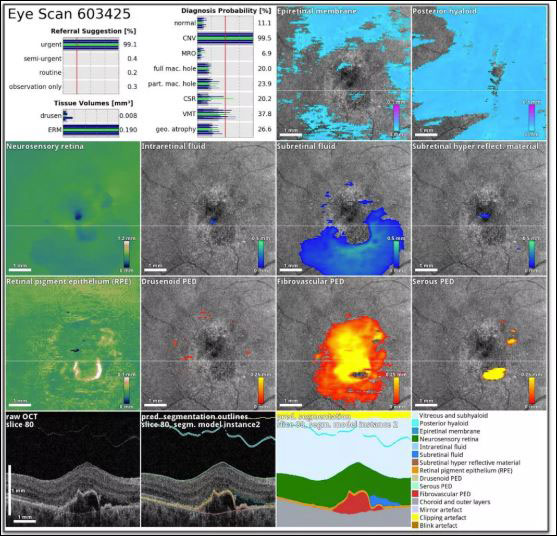Google's DeepMind can diagnose eye diseases exactly like doctors
In clinics, doctors are easily overloaded when patients too much lead to inaccuracy, errors in diagnosis.But Google DeepMind can reduce this problem with the ability to accurately diagnose more than 50 diseases that affect vision in seconds.
The fear that technology and artificial intelligence will replace and make many people lose their jobs is a far-away concept, but when machine learning and robots are growing, that concern becomes more and more obvious.
There is no doubt that robots can replace many workers in production lines but a job that seems to only be human can do because it requires intuition, knowledge, experience and attention. to the minor - the doctor's job - is now also proven by AI.
Google is increasingly perfecting DeepMind when the famous AI-based AI has defeated this Go player and can now diagnose the disease.In partnership with Moorfields Eye Hospital, Google claims that DeepMind is now able to diagnose more than 50 diseases that are potentially visually threatening with the accuracy of the world's leading doctors.
DeepMind said on a blog, how good a doctor is just human and it will take a long time to look through scans and diagnose many diseases.But DeepMind said that Google's AI can do optical tomography (OCT) in seconds.
OCT is a popular technology used to detect eye disease, but reading the scan is very time consuming.If the algorithm can support doctors, it will be very good.

A diagnostic example of the system. Photo: UCL, Moorfields, DeepMind.
However, just like with a self-driving car, leaving the computer to draw conclusions will sometimes lead to deadly evaluations.Researchers at DeepMind have used several ways to reduce this problem.The first is not to rely on an algorithm that uses a group of algorithms to cross-check.The second is not to give a single answer to each diagnosis, but to give an analysis and a level of confidence in the correct ability.It also shows how to determine each part of the patient's eye so that the doctor can analyze it later.Most importantly, it is not a direct diagnostic tool, but is only used to determine which patients need treatment first.
Although this information makes you interesting, don't be too worried / excited because even though the results are very promising, there is no certainty that DeepMind and similar technologies can be used in real environments.AI and new technologies still have to wait for response time until they are used.
See more:
- DeepMind of Google teaches AI to work in teams by playing Quake III Arena
- Google AI can create 3D images from 'flat' 2D images.
- Instructions for new learners AI: networks of neural networks
You should read it
- DeepMind's AI model can learn how to create videos just by watching clips on YouTube
- AlphaStar, Google DeepMind's artificial intelligence prevails over StarCraft II players 10-1
- Google AI can create 3D images from 'flat' 2D images.
- DeepMind of Google teaches AI to work in teams by playing Quake III Arena
- Google and DeepMind apply AI to predict the output of wind farms
- Google's new AI is capable of writing its own code
 Microsoft artificial intelligence application can admire the poetic landscape, invite you to enjoy
Microsoft artificial intelligence application can admire the poetic landscape, invite you to enjoy This is how AI defeats the best Dota 2 players
This is how AI defeats the best Dota 2 players AI can now help write the biographical pages on Wikipedia
AI can now help write the biographical pages on Wikipedia Experience training AI with Ninja game, do you want to try?
Experience training AI with Ninja game, do you want to try? The difference between AI, machine learning and deep learning
The difference between AI, machine learning and deep learning 6 steps to start learning artificial intelligence programming (AI)
6 steps to start learning artificial intelligence programming (AI)